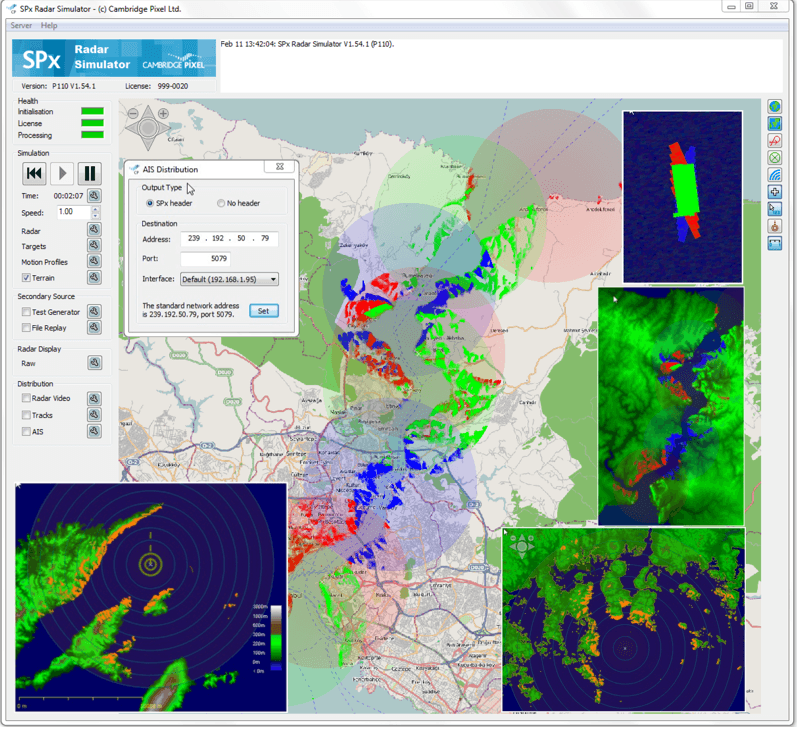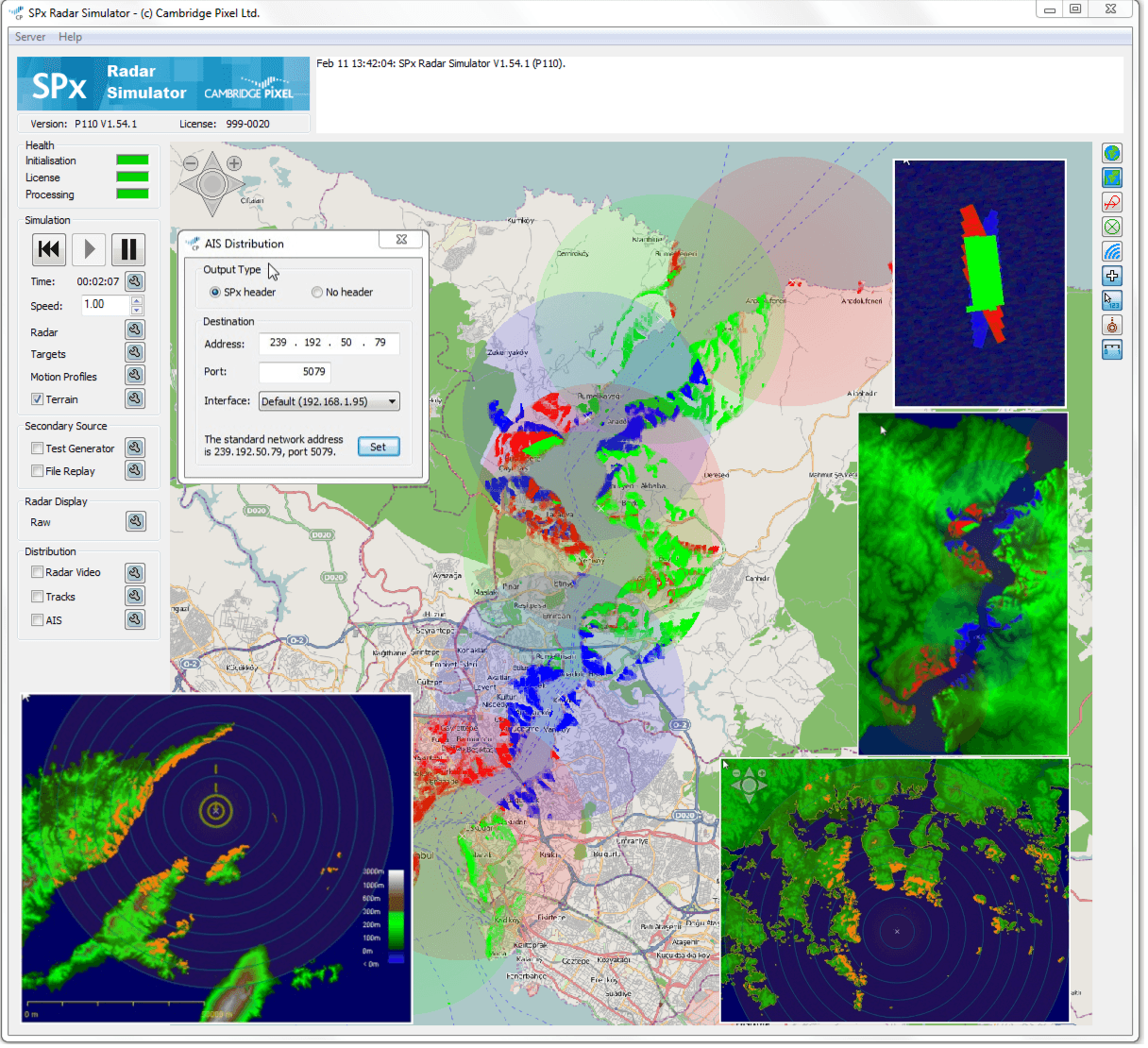- SPx Simulator enables developers of C2, ECDIS and VTS systems to create multi-radar simulations (terrain, primary radar, secondary targets and navigation data) allowing development, system testing and integration prior to connection to real data sources
CAMBRIDGE, United Kingdom, February 26th, 2013 - Cambridge Pixel (www.cambridgepixel.com), a developer of sensor processing and display solutions, has unveiled its SPx Simulator, a cost-effective software tool enabling developers of complex primary radar display applications to test and validate systems in advance of final integration.
The sophisticated SPx Simulator software builds on Cambridge Pixel's established SPx radar processing library to provide a flexible tool for system developers allowing multi-radar simulations or scenarios to be constructed including terrain effects, primary radar targets, secondary targets (AIS, IFF, ADS-B) and navigation data. The output of the simulator is a network stream of one or more primary videos in either SPx or Asterix formats, along with synchronised AIS tracks, primary tracks and NMEA 0183 navigation data.
SPx Simulator is aimed at developers of military and commercial radar display applications including Command and Control (C2) systems, Electronic Chart Display and Information Systems (ECDIS) for commercial ships, and vessel traffic service (VTS) systems for monitoring marine traffic. It can also be used for tracker configuration, operator training or to demonstrate the possible radar clutter or expected radar coverage for a given location.
David Johnson, managing director, Cambridge Pixel, said: "The ability to test and validate complex radar display applications is a real problem for many of our C2, ECDIS and VTS customers as often they only get to test their systems with live data a few weeks before the project is signed off.
"The SPx simulator has been developed to meet this challenge and uses altitude, beamwidth and pulse length considerations in its calculations to create highly realistic radar returns from multiple radar sources. It's a de-risking tool as it allows developers to create repeatable, synchronised data sets for system testing and validation in advance of the final integration and to iron out data flow issues before connecting to the live radar source."
The SPx Simulator utilises terrain elevation data from NASA's 'Shuttle Radar Topography Mission' and includes tiled maps and world vector shoreline displays to add context to the radar video being displayed. A Windows user-interface allows complex motions of targets and radar to be created, including effects of terrain on both the visibility of targets and the appearance of the primary radar. A radar display is built-in to the program to show the simulated radar video instantly.
"This is a sophisticated application which further demonstrates our commitment to our customers and our flexibility to respond to technical challenges posed by those using the SPx toolkit to develop their radar display applications," added David Johnson.
SPx Simulator is part of Cambridge Pixel's world-leading SPx suite of software libraries and applications which provide highly flexible, ready-to-run software products or 'modules-of-expertise' for radar visualisation, radar video distribution, plot extraction and target tracking. This provides a powerful set of processing and display components for capture and presentation of radar video using the capabilities of modern multi-core processors and graphics processor units (GPUs).
Cambridge Pixel's engineering team has decades of experience of developing complex radar processing and display systems for naval, air traffic control, vessel traffic, Electronic Chart Display and Information Systems (ECDIS), security and airborne radar applications.
Media contact:
Martin Brooke (for Cambridge Pixel)
Martin Brooke Associates
Tel: +44 (0) 1223 882174
Email: [email protected]
Found this interesting? Please share it with your network:



